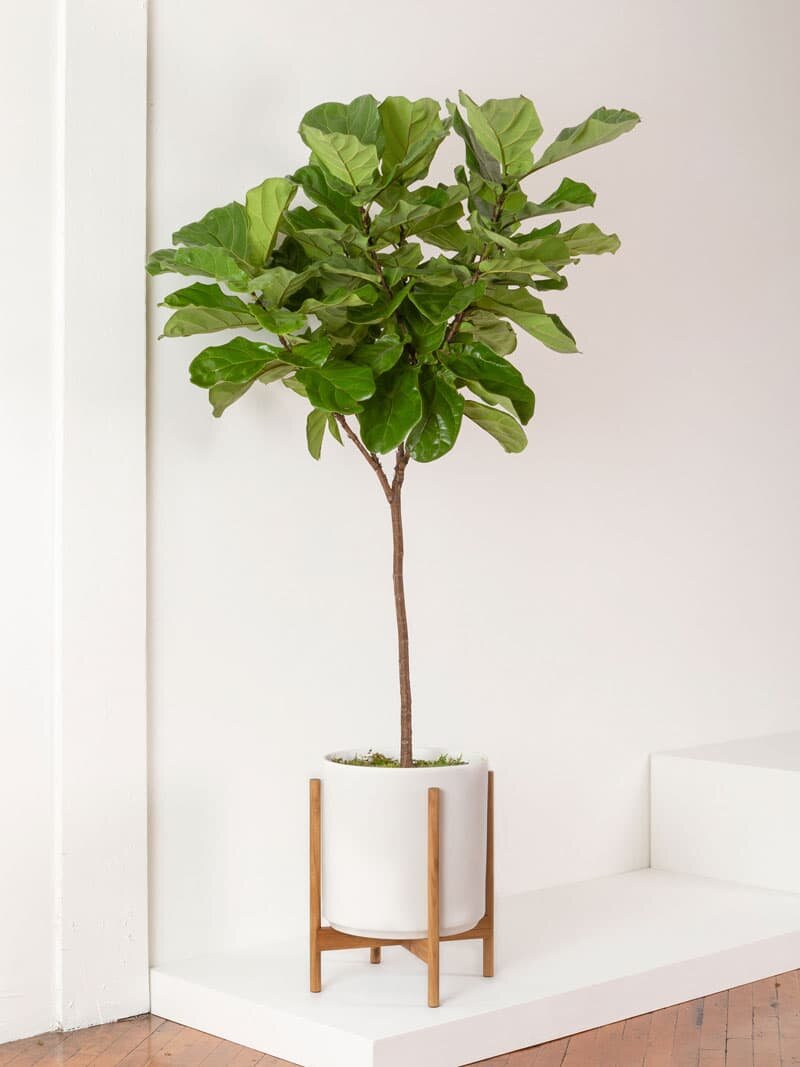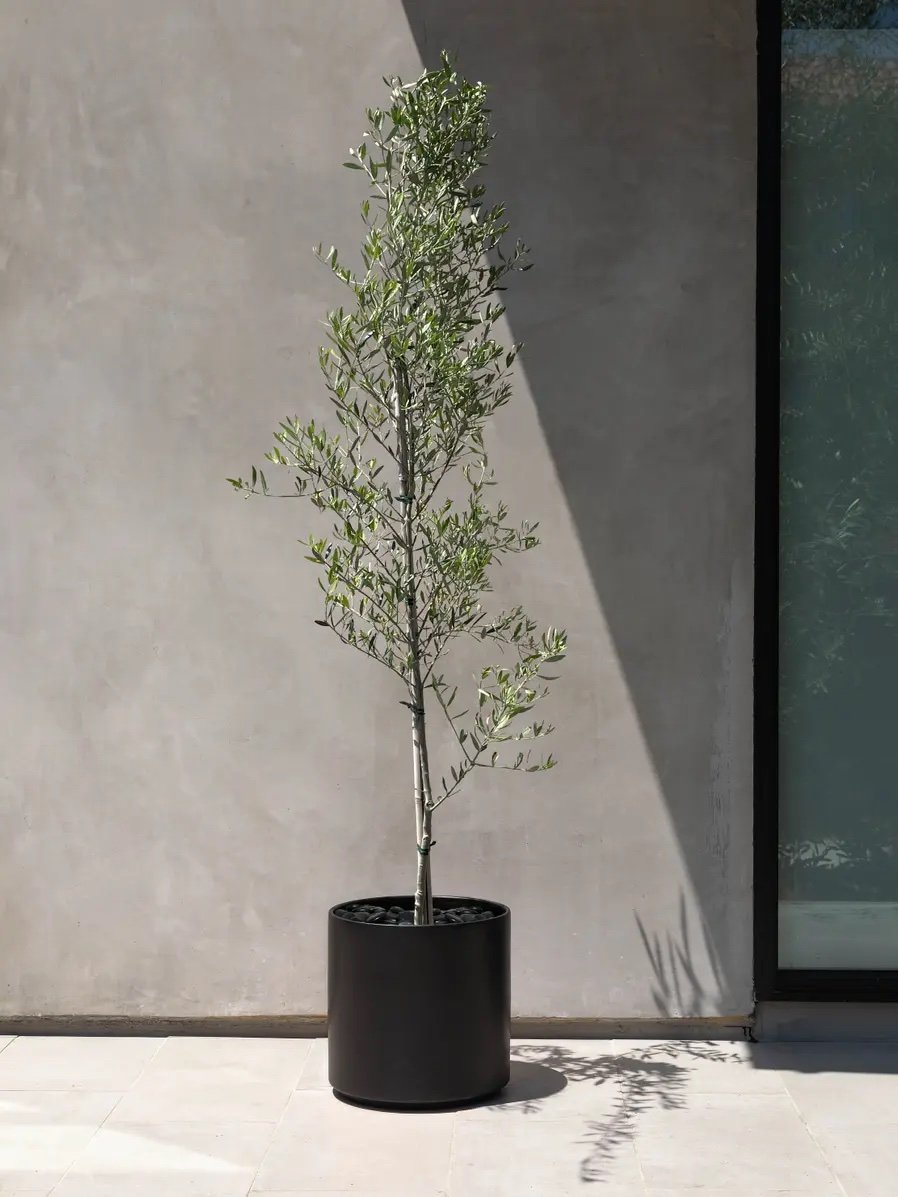Triple the prosperity! Our Braided Money Trees are available in small, medium, and large sizes.
Are you ready to care for your very own Braided Money Tree? With its striking braided trunk and lush green foliage, the Braided Money Tree is a captivating plant that brings an aura of prosperity and positive energy to any space. They even say it brings good luck, but of course, we imagine those luck-bearing properties are at their strongest when the plant is thriving!
Bring a wealth of good fortune to your home or office with the Braided Money Tree, and adhere to these Ten Commandments so that you and your plant will flourish for years to come!
Provide abundant light (if you want it to grow!)
Braided Money Trees thrive in moderate to bright indirect light.
The Braided Money Tree can be a very fast grower, and will do so in bright, indirect light. Place your plant near a window where it can bask in ample indirect light if you’d like to see it flourish and grow bigger over time. Note that the Braided Money Tree can adapt to medium levels of light, but it will grow more slowly.
And whatever you do, keep it out of harsh direct sunlight! The Braided Money Tree is a houseplant, not a beach bum, and will quickly burn if left to roast in the sun.
Maintain plenty of humidity
The Braided Money Tree is no diva, but it does hail from humid environments and as such appreciates a moist atmosphere. Increase humidity levels by regularly misting its leaves or placing a tray of water and pebbles near the plant or a humidifier. This will help recreate its natural habitat.
Elevate your space with lush charm! Braided Money Tees bring a touch of vibrant greenery to any environment.
Keep things cozy
The Braided Money Tree prefers a temperature range between 65°F and 80°F (18°C to 27°C). Shield it from extreme temperature fluctuations and drafts, which can stress the plant. If you’re cold, your plant is probably cold too!
And keep it away from heaters and AC units
A quick path to unattractiveness for most indoor houseplants is placing them right next to air vents. Likewise with the Braided Money Tree– avoid placing it near vents, air conditioners, or heating units, as they can cause dry air and disrupt the plant's health. Optimal conditions include a moderate and consistent temperature throughout the year.
Fertilize with care
Feed your Braided Money Tree with a balanced, water-soluble fertilizer during the growing season (spring and summer). Consider using Boost Vitamine, an all natural plant food that is ideal for Braided Money Trees and other indoor specimens. Follow the instructions and take care not to overdo it! Over-fertilizing can lead to “fertilizer burn” on your plant’s foliage.
Water judiciously
While the Braided Money Tree appreciates regular watering, it dislikes “wet feet” or waterlogged soil. Allow the top inch (2.5 cm) of soil to dry out before watering again. Ensure proper drainage by using a well-draining potting mix and a pot with drainage holes.
Braided Money Trees flourish with occasional trimming, shaping your wealth and growth.
Prune with purpose
Pruning is essential to maintain the shape and health of your Braided Money Tree, as well as to promote new growth. Trim away any dead or yellowing leaves, as well as leggy growth, to encourage a fuller and more balanced appearance. Use clean and sharp pruning tools to minimize the risk of disease. As always with pruning, never remove more than 30% of the leaves at a time.
Be vigilant against pests
Plants don’t attract pests, but they can be an attractive home for pests if not cared for properly. Regularly inspect your Braided Money Tree for signs of infestation, such as webbing, tiny crawling insects, or sticky residue. Keep your plant clean with soap specially formulated for indoor plants, and treat any pest issues promptly with organic insecticidal soaps or other appropriate natural remedies like Neem Oil.
Repot wisely
When your Braided Money Tree outgrows its current pot, transfer it to a slightly larger container with fresh, well-draining soil. Repotting every two to three years, preferably in spring, allows the roots to have adequate space for growth and prevents the plant from becoming root-bound. Read our full guide on how to repot your plant.
Embrace plant companions
Consider grouping your Braided Money Tree with other compatible houseplants. Plants in proximity create a microclimate of increased humidity and can benefit each other. Just ensure their light and watering requirements align, and they will thrive together.
Pair a Braided Money Tree with a Parlor Palm to create a stunning botanical oasis.
Ready to take on the luck-bearing Braided Money Tree? Follow these ten commandments and we guarantee you will have a lush, flourishing Money Tree in no time!
Designed to Thrive
Premium plants, potted and delivered, plus lifetime access to 24/7 Plant Doctor support. Order online at leonandgeorge.com
























































